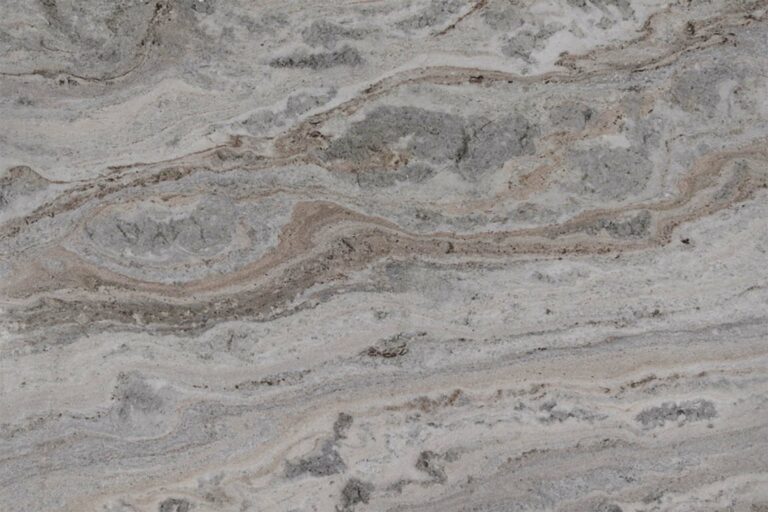When it comes to creating a timeless and luxurious look in your kitchen or bathroom, natural stone countertops are a popular choice. The durability, unique patterns, and natural beauty of stone add an element of sophistication to any space. In this article, we will delve into the different types of natural stone countertop rocks, including sedimentary, igneous, and metamorphic rocks, and explore their characteristics, including calcareous and siliceous compositions, to help you make an informed decision for your next countertop project.

There are 3 basic types of rocks. Stone slabs for countertops are classified based on their composition of calcite and silica. Why? Calcareous stones will etch (react to acid), while siliceous stones will not.
- Sedimentary Rocks:
Sedimentary rocks are formed by the deposition and compaction of sediments over time. They are often recognized by their layered appearance and various textures. Sedimentary rocks can have different compositions, including both calcareous and siliceous materials:
- Calcareous Sedimentary Rocks: Calcareous sedimentary rocks primarily consist of calcium carbonate (CaCO3) or contain a significant amount of this compound. Examples of calcareous rocks used for countertops include limestone, travertine, chalk, and fossiliferous limestone. These rocks exhibit lighter color palettes and offer a unique blend of beauty and elegance to your countertops. However, they can be more susceptible to etching when exposed to acidic substances and may require proper care and maintenance.
- Siliceous Sedimentary Rocks: Siliceous sedimentary rocks contain a high percentage of silica (silicon dioxide, SiO2). Common siliceous rocks used for countertops include sandstone, shale, conglomerate, and arkose. These rocks often exhibit a wide range of colors and textures, from earthy tones to vibrant hues. Siliceous rocks are generally more resistant to etching caused by acidic substances compared to calcareous rocks.
- Metamorphic Rocks:
Metamorphic rocks are formed from the transformation of pre-existing rocks under intense heat and pressure. They exhibit unique textures, patterns, and a range of colors. Metamorphic rocks can also have different compositions, including both calcareous and siliceous materials:
- Calcareous Metamorphic Rocks: Calcareous metamorphic rocks, such as marble and meta-limestone, originate from the recrystallization of pre-existing limestone or other calcareous rocks. Marble is renowned for its timeless elegance and luxurious appearance. However, it is important to note that marble is softer and more susceptible to scratching and staining, requiring regular maintenance to preserve its beauty.
- Siliceous Metamorphic Rocks: Siliceous metamorphic rocks, including quartzite, meta-sandstone, slate, and phyllite, form from the metamorphism of silica-rich sediments or pre-existing siliceous rocks. These rocks offer durability and unique textures, making them suitable for a variety of design styles. Siliceous metamorphic rocks are generally more resistant to etching and require less maintenance compared to their calcareous counterparts.
- Igneous Rocks:
Igneous rocks are formed through the cooling and solidification of molten magma or lava. They are known for their strength, durability, and vibrant colors. Igneous rocks can also have varying compositions, including both calcareous and siliceous materials:
- Calcareous Igneous Rocks: Calcareous igneous rocks, such as carbonatite, kimberlite, and skarn, contain calcareous minerals in their composition. These rocks are relatively rare and are not commonly used for countertops. However, they offer unique characteristics and can add a distinctive touch to architectural designs.
- Siliceous Igneous Rocks: Siliceous igneous rocks, including granite, basalt, rhyolite, obsidian, and pumice, are rich in silica content. Granite, with its durability and wide range of colors and patterns, is a popular choice for countertops. Siliceous igneous rocks are generally more resistant to etching and provide a long-lasting and visually appealing countertop surface.
Natural stone countertop rocks, whether sedimentary, metamorphic, or igneous, offer unparalleled beauty and durability for your kitchen or bathroom. Understanding the calcareous and siliceous compositions of these rocks can help you choose the perfect material for your countertop project. Consider the unique characteristics, maintenance requirements, and potential reactions to acidic substances when selecting a natural stone countertop. Whether you prefer the elegance of calcareous rocks or the durability of siliceous rocks, there is a natural stone countertop that will enhance the aesthetics and functionality of your space. Invest in the timeless appeal of natural stone and enjoy a stunning and durable countertop that will stand the test of time.
Check out our drilldown posts if you want to learn more about granite or quartzite specifically, and feel free to browse our online inventory here if you are looking to fall in love with natural stone countertops today.
